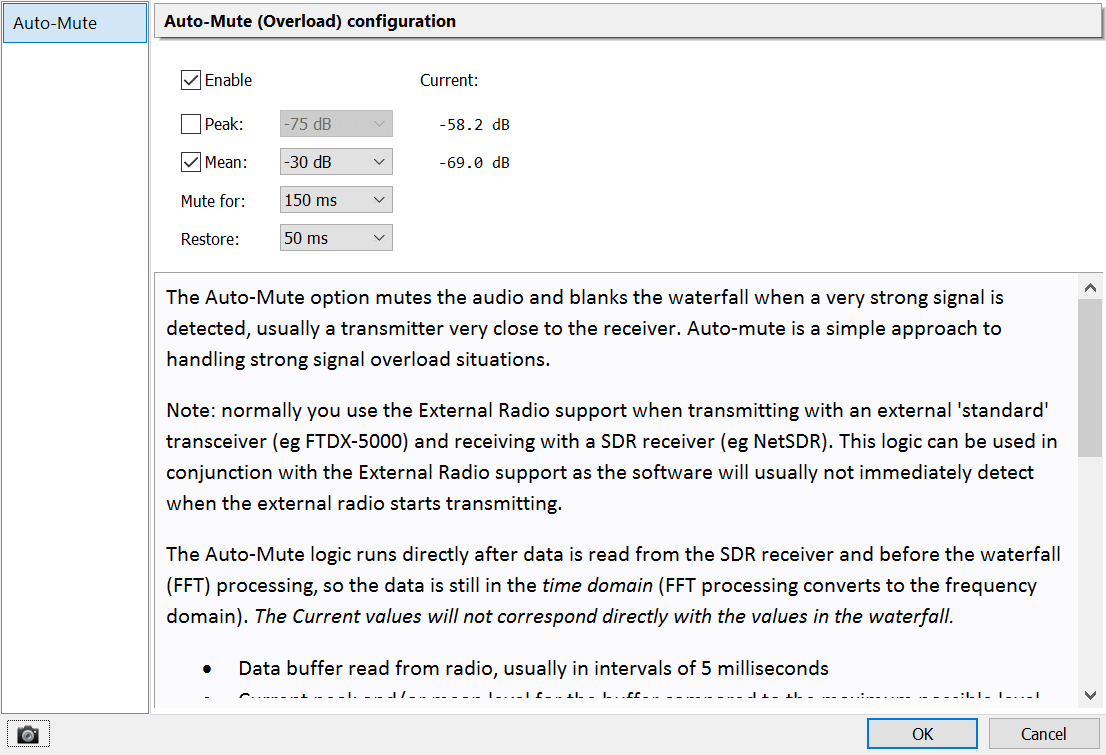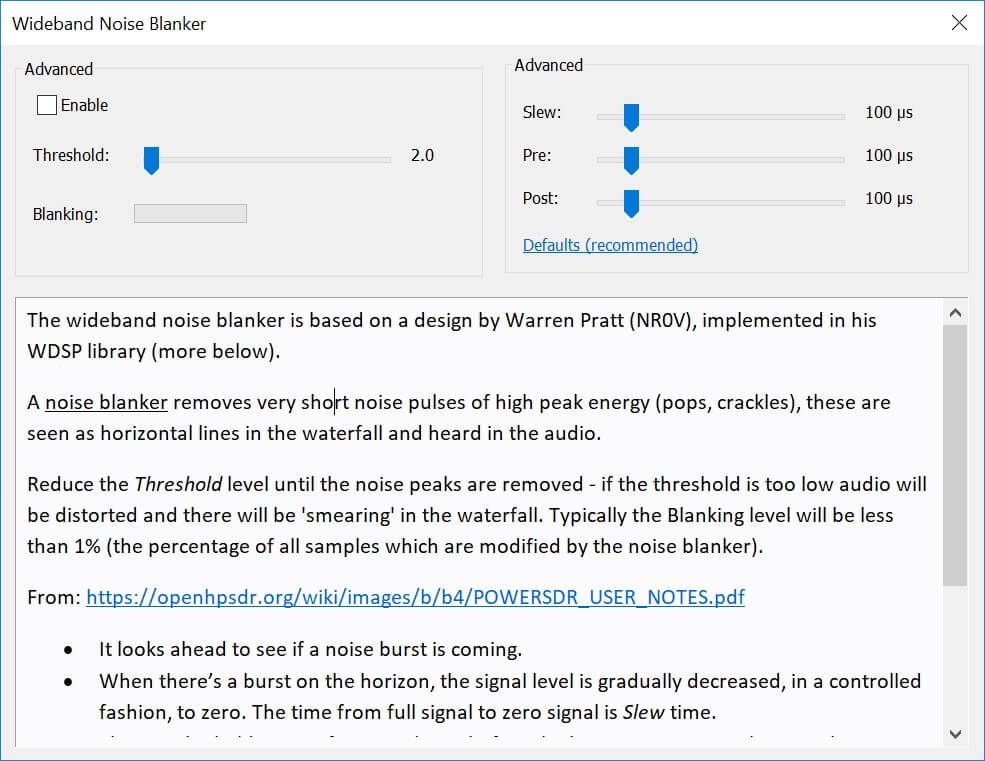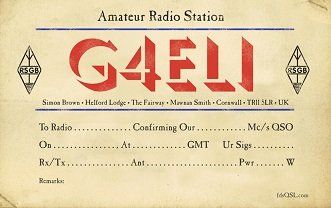Wideband DSP
Wideband DSP
Introduction
Wideband digital signal processing (DSP) is applied directly after data is read from the radio and before any waterfall, spectrum or demodulation.
Auto Mute
The auto mute feature automatically blanks the waterfall and mutes the audio when a strong signal is detected. This is a very useful option to have in a SDR console, apart from anything else it ensures no audio feedback if you are listening on or close to your transmission frequency. Auto-mute is a simple approach to handling strong signal overload situations.
- An alternative to External Radio support,
- Simple to configure,
- No cables needed!
Note: normally you use the External Radio support when transmitting with an external 'standard' transceiver (eg FTDX-5000) and receiving with a SDR receiver (eg NetSDR). This logic can be used in conjunction with the External Radio support as the software will usually not immediately detect when the external radio starts transmitting.
The Auto-Mute logic runs directly after data is read from the SDR receiver and before the waterfall (FFT) processing, so the data is still in the time domain (FFT processing converts to the frequency domain). The Current values will not correspond directly with the values in the waterfall.
- Data buffer read from radio, usually in intervals of 5 milliseconds
- Current peak and/or mean level for the buffer compared to the maximum possible level (usually use the mean level)
- If the peak and/or mean exceeds the configurable threshold the mute / restore logic is applied
- During the mute phase the radio data is set to zero, no audio is heard, the waterfall level is zero
- During the restore phase the signal level restored to the normal level (similar to an AGC)
Configuration
To enable auto-mute the data from the radio must be greater than the peak and/or mean threshold. So far experience has shown that the mean threshold is the best value to use.
Suggested settings when using an external radio in VOX are:
- Peak: disabled
- Mean: enabled, -30dB to -50dB threshold
- Mute: 100ms
- Restore: 50ms
The Current values can be used as a guide, the value you select should be greater than the current when a strong signal is not present.
If using this option in conjunction with External Radio support the mute and restore levels can be reduced, use trial-and-error.
Noise Blanker
The wideband noise blanker is based on a design by Warren Pratt (NR0V), implemented in his WDSP library (more below). A noise blanker removes very short noise pulses of high peak energy (pops, crackles), these are seen as horizontal lines in the waterfall and heard in the audio. Reduce the Threshold level until the noise peaks are removed - if the threshold is too low audio will be distorted and there will be 'smearing' in the waterfall. Typically the Blanking level will be less than 1% (the percentage of all samples which are modified by the noise blanker).
- It looks ahead to see if a noise burst is coming.
- When there’s a burst on the horizon, the signal level is gradually decreased, in a controlled fashion, to zero. The time from full signal to zero signal is Slew time.
- The signal is held at zero for a Lead time before the burst arrives to catch as much as practical of the burst leading edge.
- The signal is held at zero during the pulse and for Lag time after the pulse to catch as much as practical of the trailing edge.
- The signal is then restored to full value using a controlled transition in Transition time.





